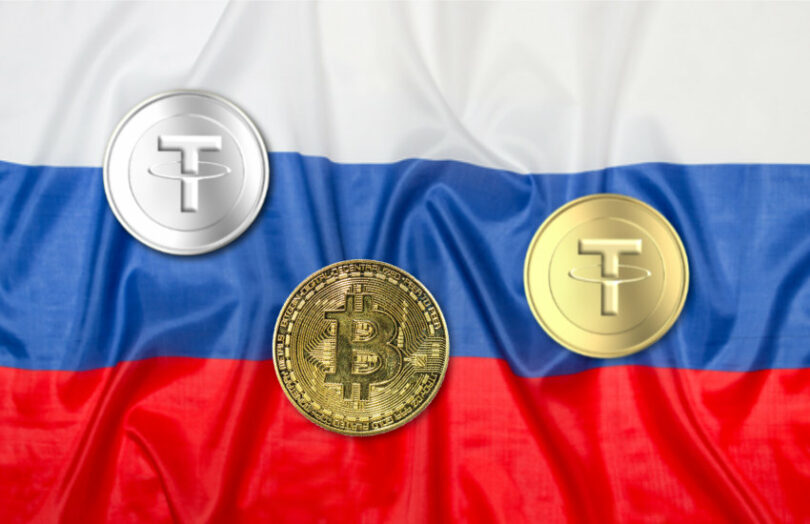Yesterday the State Duma approved a Bill legalizing the use of cryptocurrencies for cross border payments after the second and third readings. The final step requires the approval of the Federation Council and the President’s signature. Central bank Governor Elvira Nabiullina said she expects the first crypto payments to happen later this year. Additionally, the ‘mass implementation’ of a digital ruble central bank digital currency (CBDC) will happen around July 2025.
While Vladimir Putin has pressed for the CBDC, the timeframe isn’t a major departure from previous plans. In April Governor Nabiullina said scaling up would start during 2025 at the earliest. The July prediction also has caveats.
The cryptocurrency experimental legal regime (ELR) requires the central bank to coordinate with other departments to develop a program. Rather than everyone just using crypto, the experimental program will outline procedures and restrict the participants and the experimental period.
Yesterday another law was passed by the State Duma which “allows the circulation of foreign digital rights in Russia, and Russian digital rights abroad,” according to the central bank. We believe this may relate to Russia’s digital financial assets (DFAs), which are similar to tokenized real world assets and include tokenized gold. Russia previously passed laws allowing them to be used for cross border payments. Alternatively, ‘digital rights’ might relate to CBDC.
The same law also establishes procedures and conditions for cryptocurrency mining.
Strategies to address sanctions
In order to sidestep sanctions following its invasion of Ukraine, Russia has a multi pronged strategy. However, as it has progressed each strategy, the United States has deployed an additional wave of sanctions. One of the most recent was June sanctions against the Shanghai branch of Russia’s VTB Bank. It previously sanctioned almost all the approved platforms for issuing digital financial assets and some cryptocurrency exchanges.
The plans for cross border payments include:
- using cryptocurrencies, which are otherwise restricted in Russia
- using tokenized commodities such as gold, known as digital financial assets. Within Russia these cannot be used for payment
- local currency payments via the planned BRICS Bridge initiative
- central bank digital currency payments.
Nabiullina’s cross border payment speech
Below is an automatically translated transcript of the cross border section of Governor Elvira Nabiullina’s speech at a Federation Council meeting of the financial market committee.
I will dwell on what is now very worrying both us and businesses – these are cross-border settlements. The risks of secondary sanctions have grown, they greatly complicate import settlements, and for a very wide range of items. Business, as a rule, finds a way out, but the chains and terms are lengthening, costs are growing. Settlements are vulnerable to sanctions as long as they are made in dollars and euros and via SWIFT channels. And we are switching – this is a strategic line – to settlements in national currencies using independent channels for transmitting financial messages.
We are also working in this direction with our BRICS partners. In particular, we are promoting the BRICS Bridge project together with the Ministry of Finance, which would reduce both the cost and the timeframes for settlements in national currencies with BRICS countries, including its new members.
And we are ready to show flexibility in external settlements. Today, the State Duma is considering a law that allows settlements in cryptocurrencies within the framework of an experimental regime. We are already discussing the terms of the experiment with ministries, departments, and businesses and expect that the first such payments will take place before the end of this year.
At the same time, a law is being considered today that simplifies the use of digital financial assets in cross-border settlements.
In the future, cross-border settlements in central bank digital currencies are also possible . We are in dialogue about this with a number of countries.
And here’s what concerns our digital ruble pilot. Literally in a month we will expand it for those banks that are already with us in the pilot. And in the future there will be a series of pilot expansions. Now I can say that if everything continues to go according to our plan, we will be able to move from the pilot to the mass implementation of the digital ruble from July 2025.
We are aiming for these dates. But this will be a gradual process.
And I would like to emphasize once again that the use of the digital ruble by citizens will be absolutely voluntary. I will not tire of repeating this, because there is a big misunderstanding that we will impose the digital ruble. This is not so. In our opinion, the digital ruble has obvious advantages for people to use it: absolutely free transfers for citizens and commissions for businesses that are several times lower than for cards. We believe that thanks to these advantages, the digital ruble will gradually, within 5-7 years, become a familiar part of our lives.






